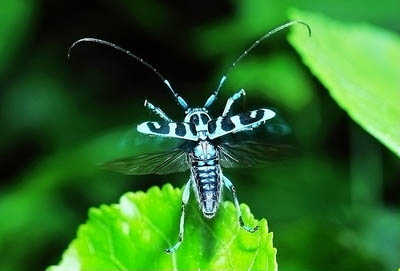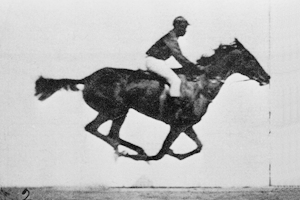“Take only memories, leave nothing but footprints.”
– Chief Seattle
This quote from Chief Seattle, leader of the Suquamish and Duwamish Native American tribes, is paraphrased by modern naturalists as, “Take only photographs, leave only footprints” (and sometimes adding, “Kill only time.”).
 Beetle in Flight Credit: Matthew Fang |
In the past, Naturalists like Charles Darwin had to collect live specimens of animals, sometimes with amusing results. This method would present a moral dilemma for modern naturalists, as killing potentially endangered plants, insects, and animals is counterintuitive to preserving them.
Luckily, today’s naturalists have a non-destructive tool in cataloging the Earth’s biodiversity, the camera. The World Wildlife Foundation and other scientists have begun deploying Camera Traps, cameras with motion sensors that photograph everything that wanders by, and the technique has caught the existence of many animals not seen in nature for a very long time. Bioblitzes are 24-hour events where groups catalogue all the species they can find in a location, be it a forest or public park, where digital cameras come in especially useful. The wonderful iNaturalist.org website combines nature photography with mapping in such a way that the data will be used in future years to track species migrations in a warming world and the health of various populations.
 Animation of a race horse galloping taken from photographs Credit: Eadweard Muybridge |
Photography also contributes to science in other ways. Time is infinitely divisible, and humans are able to perceive the briefest instant of time, but a sequence of quick events are distorted in our minds. For instance, in 1872 there was a highly debated question about the gait of a galloping horse, and whether all of the horse’s hooves were off the ground at any time during a stride. Photographer Edward James Muggeridge was able to capture a series of images that conclusively resolved the question. Surprisingly, many museums, textbooks, and illustrators today still get the gait of dogs wrong despite having such evidence at their disposal.
 Sequence of a race horse galloping Credit: Eadweard Muybridge |
Digital cameras are cheap. Flickr accounts are free (basic ones at least). I think one of the best ways to introduce children to science and nature is to introduce them to both of these innovations. It’s like collecting beetles, comics, or stamps, only there’s a much larger realm of things to collect, a lot to learn in the process, and a whole Internet full of people to share with.